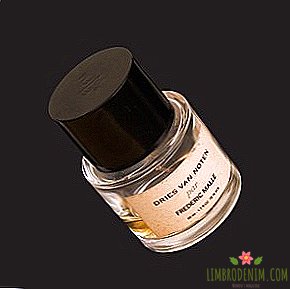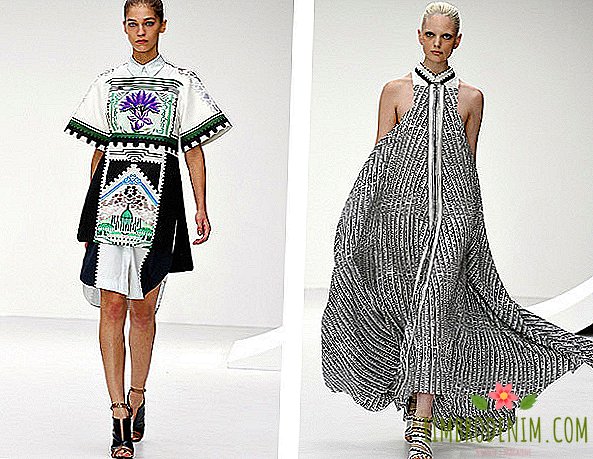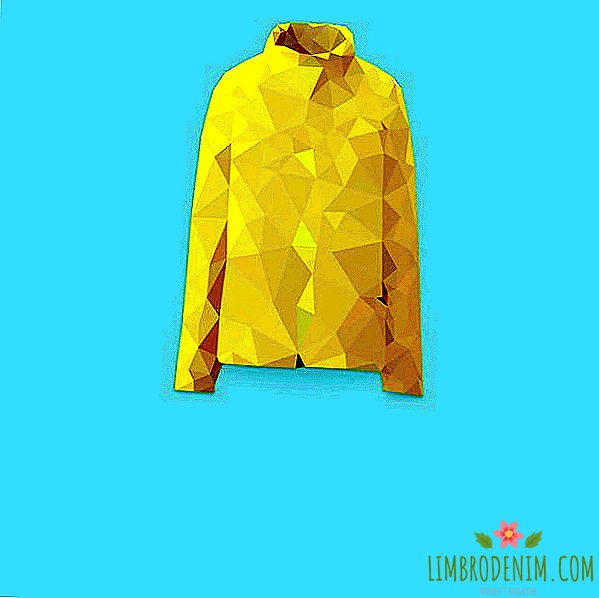Trends in 2013 that will not go away in 2014
All year, the Wonderzine team analyzes fashion trends, tells how to apply them to life and where to buy things that best reflect these trends. Of course, many of them are pretty annoying, but some want to be left in the wardrobe almost forever. Today we list 13 trends of 2013, which will remain in demand in 2014.

Since the 1970s, everyone is wearing a tuxedo: Bianca Perez Morena de Macias marries Mick Jagger in it, and Helmut Newton takes pictures of Vibeke Knudsen and Charlotte Rampling in tuxedos for Vogue. How to wear a tuxedo in the 2000s, Stella McCartney and Phoebe Faylo showed by example: he became a uniform for them when it came to parties and other celebrations. The fact that the tuxedo will certainly appear in the collections of the last two seasons, it became clear with the return of designer Edie Sliman to Saint Laurent. This was hinted not only by the legacy of the brand entrusted to him, but also by the fact that in the early 2000s, Sliman, then the creative director of Dior Homme, dressed in tight suits of guys (and the girls of these guys who complained about the lack of well-tailored suits in women's collections) .
Colored fur
The first to paint the fur in unusual colors decided Yves Saint Laurent. In the 1970s, actress Anita Pallenberg, Britt Ekland and Angela Bowie wore short voluminous coats of pink and blue fur. The real boom of multi-colored fur coats fell on the 80s: remember the shooting of Patrick Demarchelier with Christy Turlington in Escada, blue-orange or Richard Avedon with Cindy Crawford in New York designers' purple and blue lamas.
Floral prints in winter
The Wall Street Journal calls the floral prints of the autumn-winter season a legacy of grunge and punk from the 1990s. So, Italian Ricardo Tisci, the creative director of Givenchy French, combines roses with a cage and puts this collage on leather jackets and shirts, and Edie Slimane from Saint Laurent is inspired by Courtney Love and shows mini-dresses in small florets. They are supported by MSGM creator Massimo Giorgetti: “I'm tired of the bright and fluorescent, these are things for the spring-summer season. My new prints are for the romantic punk rocker.”
Clutch Cases
In 1923, jeweler Alfred Van Cleef creates an Asian collection, which includes elegant versions of mahogany and ebony travel bags with golden dragons - such prototypes of clutch-cases. Like elegant handbags, clutch-boxes reach their peak already in the 60s and 70s. Recall, for example, the Hungarian handbag designer Judith Leiber, who at the time was creating box clutches of unimaginable colors and shapes: in the form of pineapples, tits, shells — all in crystals. Now such bags are more likely part of an evening dress: it is unlikely that a Stella McCartney marble clutch or a Valentino metallized with many small pearls will be worn in everyday life.
Golden color
In the 1980s, gold prices are rising and falling rapidly. But the golden color becomes one of the features of the kitsch of the 80s: the musician Lloyd Johnson and Naomi Campbell is dressed from head to toe on the cover of American Vogue with equal success. The main adherent of gold, Gianni Versace, exploits this color to death in 1997: Versace models flash in campaigns in overalls of gold brocade and bomber jackets and skirts of golden silk with multi-colored patterns (in such it is easy to imagine MIA, who recently created a collection for the younger sister Versace, Versus). Golden becomes a landmark for other Homes, such as Gucci and Moschino.
Angora and mohair
Of course, mohair was always allowed to create warm clothes - coats, sweaters and hats with gloves. This is an expensive material, so its use by a large number of designers directly depends on trends. Mohair gained popularity in the 1970s, when Yves-Saint-Laurent styled volume fur and other similar textures. Now his successor, Edie Sliman, includes cardigans and mohair plaid scarves in the Saint Laurent collection, referring to grunge. Now the use of mohair for stamps is another way to turn to the 1990s: Stella McCartney does the same, showing voluminous sweaters with a checkered pattern. This season, mohair is used to sew dresses and coats of the brand of the luxury market segment, for example, Jil Sander, because the material is difficult to find better.

The first mention of pink occurs relatively recently - in the XVI century: they described the color of the plants of the family of carnations. Then this shade is widely used in the Empire style, and every now and then flashes in the dresses of monarchs - remember Marie-Antoinette in the same film by Sofia Coppola. However, until the 20th century, pink was considered masculine: “The general rule is that pink is suitable for boys because it shows strength,” writes Ladies' Home Journal in 1918. Since the 1930s, this stereotype has changed - they say that the reason is the views of fascist Germany: the Germans associated pink with homosexuality, so guys should wear blue. However, before the era of fascism, the girls in pink were written by Degas and Renoir. There are many phenomena associated with pink that are practically unrelated to fashion: from left-wing political views (remember the cover of Time magazine in 1927) to the form of cyclists Tour de France.
Camouflage
Camouflage appeared recently - at the beginning of the last century. The print, the name of which is derived from the French camoufler ("mask"), was invented (yes-yes) by the military to protect soldiers from air attacks and bullets. It is believed that the creation of this pattern was inspired by the cubists and tromplay, that is, a technique in art that helps to deceive the eyes. In wartime, camouflage was painted by artists - including the author of "American Gothic" Grant Wood and Jacques Villon. Studying the features of view, the military invented more and more new types of prints: from Woodland, popular among the troops in Ghana, Liberia and Zambia, they switched to Tigerstripe (Vietnam) and Chocolate chip (Egypt).
Wide pants
Many designers are inspired by the 1980s. Then the women put on like men's suits: long, spacious jackets with wide, straight trousers. Now the fashion of that time is copied by both Balmain, literally quoting the eighties with the TV series "Dynasty", and Céline, recalling the images of strong women of the era.
Velvet
Modern velvet history looks pretty simple. It is considered one of the most common materials of the era of Art Nouveau. Already later in the 20th century, couture houses, from Carven to Balmain, used it as material for beautiful evening gowns - for good reason Italian Vogue calls velvet a symbol of luxury. In the 1970s, sweeping velvet dresses with deep necklines became popular due to nostalgia for the past. But in the future, this fabric, unlike denim or leather, almost does not acquire a subcultural hue: only the goths of the 1980s wore velvet things. Another velvet climb is experienced in the late 90s and early 2000s. Since then, he was even associated with the fashion for fetish, and now every second designer shows the velvet of a deep shade of precious stones - emeralds or sapphires.
Turtlenecks
Since the 1970s, turtleneck has been a symbol of the feminist movement. And they are very fond of Miles Davis, Stevie Wonder, and fighters for the rights of black people - for example, Kathleen Cleaver. In the 1990s, turtlenecks flash in the catwalk collections of Gilles Zander, and nowadays Phoebe Faylo and Stella McCartney are connected to it. For all three designers, they are a uniform and a real hit of sales. Five years ago, turtlenecks were associated with nerds, and also became significant things for Vladimir Putin and Steve Jobs, but now their reputation is changing. The New York Times writes that this piece of clothing shows the sexuality of our day. Not for nothing that there is a phrase "smart is the new sexy". Do not forget that turtlenecks are part of the form of athletes. Perhaps they will be again at the peak at the Olympic Games in Sochi in 2014.
Cock cocoons
The creator of the cocoon is Cristobal Balenciaga. He showed it at the beginning of 1957, and six months later, he continued to create deliberately voluminous things, demonstrating the so-called "giant" collection of clothes and accessories a couple of sizes larger than models were supposed to. The coat-cocoon is also called the "Grace Kelly coat": the actress was Balenciaga's girlfriend and, of course, she often wore his clothes. But it is believed that the coat-cocoons were invented at the beginning of the XX century. Proof - sketches of similar coats, appeared on the pages of the French magazine La Gazette du Bon Ton in 1912.




